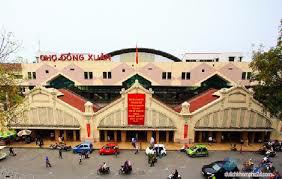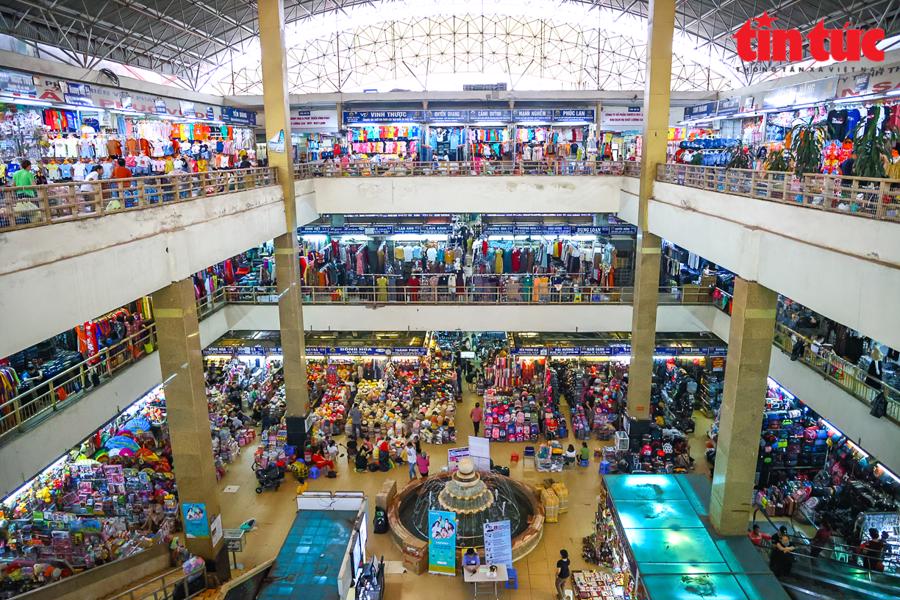Vietnam's Traditional Markets Face Existential Challenge as E-Commerce Soars
The rise of online shopping leaves age-old markets struggling to survive, forcing businesses to adapt or perish.

Bustling markets have long been a cornerstone of Vietnamese commerce and community life. However, these once-vibrant hubs are now facing an existential threat as consumers flock to online platforms.
The convenience and competitive pricing of e-commerce have profoundly altered shopping habits, leaving traditional markets struggling to keep up.
A Tale of Empty Stalls and Idle Vendors
Hanoi's historic wholesale markets, Dong Xuan and Hom, epitomize this transformation. "So bad!" Ms. Thuy, a long-time clothing vendor at Dong Xuan Market was quoted as saying by the online Trade and Industry news website.
"Customers buy everything online, they don't go to the market anymore." Once-crowded aisles are now conspicuously empty, and the chatter of bargaining has been replaced by the bored scrolling of vendors on their phones.
Small businesses, in particular, face mounting challenges. Burdened by fixed costs like rent and transportation, they can't match the aggressive pricing of online sellers.
A plain T-shirt retailing at Dong Xuan for VND 100,000 - 160,000 (USD 4 - 6.50) can often be found online for as low as VND 70,000 - 120,000 (USD 2.75 - 4.75). This price chasm is driving budget-conscious consumers away from traditional markets, the site said.

Fueled by Pandemic-Accelerated Digital Adoption
Vietnam's e-commerce sector exploded in size and reach during the COVID-19 pandemic, permanently altering consumer behavior. In the first quarter of 2024, sales on Vietnam's top five online platforms are expected to hit USD 3.33 billion – a staggering 78% increase year-on-year.
Analysts had initially predicted more modest 35% growth for the full year, demonstrating the relentless pace of the digital shift.
"Many consumers who were initially hesitant about online shopping were forced to try it during the pandemic lockdowns," Dr. Nguyen Tri Hieu, an economist specializing in digital retail, told Vietnam Economic Times. "Having experienced the convenience, they've simply not gone back to their old shopping habits."
E-Commerce Penetration Reaches Beyond Major Cities
While Hanoi and Ho Chi Minh City remain the largest markets, e-commerce is booming nationwide. Industrial provinces like Quang Ninh, Bac Ninh, Binh Duong, and Hai Duong have seen triple-digit growth in online orders.
This highlights the rapid penetration of e-commerce into both rural settings and manufacturing hubs. Rural businesses now account for over 50% of e-commerce sales and shipments, a testament to the diminishing urban-rural divide in internet access.
The product mix is also diversifying. While beauty leads in sales, categories like women's fashion and home appliances are rapidly increasing their market share.
This reflects the rising disposable incomes of Vietnamese consumers, who are embracing the broader selection and aspirational lifestyle products available online.
Cashless Payments and the Digital Revolution
Mirroring the rise of e-commerce, Vietnam is witnessing a rapid shift toward digital payments. Mobile wallets and QR-code payments are replacing cash for many consumers.
"Online payment is just easier; I can manage my spending and don't have to carry a lot of cash," notes Do Bich, an avid online shopper in Hanoi.
The rapid decline of cash transactions further signals Vietnam's decisive shift towards a digital economy. By the end of 2023, the number of individual payment accounts exceeded 182.88 million – a stunning 21.8% increase from the previous year.
Non-cash transactions surged across multiple channels in January 2024 compared to the same period in 2023. Online payments grew by 57.85% in volume and 32.43% in value, while mobile payments saw an even more significant jump of 68.54% and 41.12% respectively.
Impressively, payments via QR code skyrocketed, registering an increase of 892.95% in volume and a staggering 1,062.01% increase in value during the same period.
This data undeniably underscores the growing preference for cashless transactions and the integration of digital payments into the daily lives of Vietnamese consumers.
A Dynamic Marketplace Demands Innovation
Vietnam's e-commerce landscape is intensely competitive, with platforms constantly vying for market share. Shopee holds the top spot, but TikTok Shop's meteoric rise to second place underscores the need for innovation.
"Shoppertainment" – blending e-commerce with live-streamed promotions and influencers – is a growing trend, set to capture an estimated USD 8.1 billion of the market by 2025.

Challenges and the Imperative to Adapt
Vietnam's digital boom opens a world of possibilities, but firms must navigate rising competition and potential supply chain risks due to global uncertainty.
Changing platform policies also pose challenges, requiring sellers to constantly refine their strategies. "Data and real-time analysis are now essential tools for online businesses," emphasizes Pham Bao Trung, Sales Director of e-commerce data firm Metric.
The future of Vietnam's retail sector will be defined by the interplay between tradition and technology. As consumers embrace online shopping, the challenge for traditional markets isn't just about survival; it's about finding ways to integrate, to offer an experience e-commerce cannot replicate.
Only the most adaptable businesses, both online and offline, will thrive in this rapidly evolving landscape.







